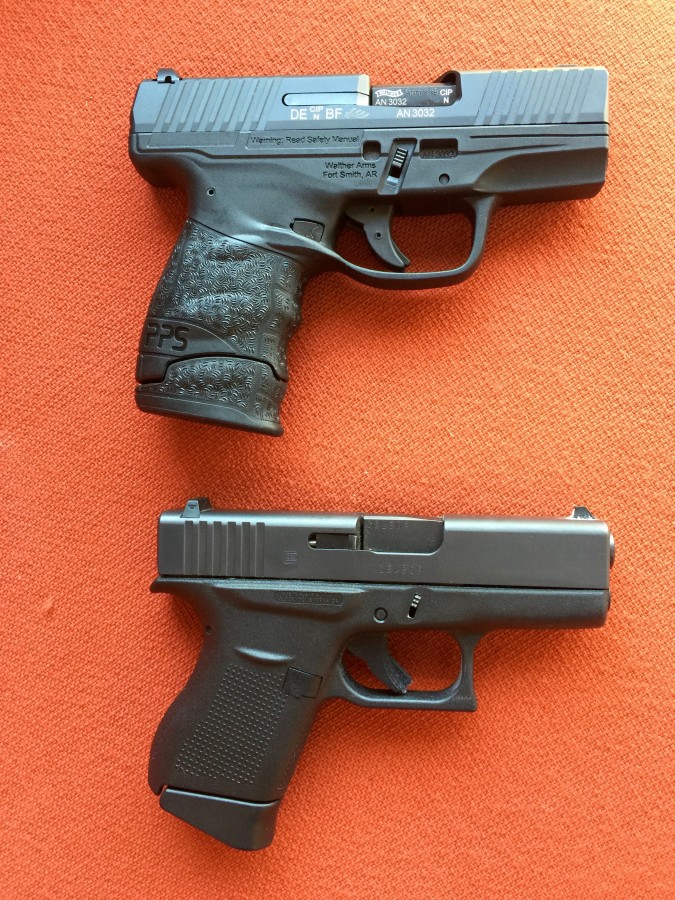Walther Pistol Serialization

Walther supplied several pistol models to the German military,including this Walther PP or Politzei Pistole handgun originallyintended for law enforcement sales. SN 368980Walther Waffenfabrik was founded in 1886 by German firearmsdesigner Carl Walther (1860 - 1915). The Walther family'sconnection to firearms design and manufacture can be traced toMatthias Conrad Pistor, chief armorer and gunsmith at KasselArsenal during the 18th century.
Built for life. Walther is a brand with a long history of innovation. 2017 WALTHER CATALOG. Customer Care. 479-242-8500 EXT. 507; customerservice@waltherarms.com Customer Support Handgun Registration Legendary Limited Lifetime Warranty. Business Info. Employment View Catalog Media Center. Jun 17, 2017 The Walther family's connection to firearms design and manufacture can be traced to Matthias Conrad Pistor. Trench gun, Luger, P38 AC41 and P38. Serialization/ Date of Manufacture from The Blue Book. Mauser P08 Luger Black Widow Semi Automatic Pistol. Item Name: FS Walther P38 German Pistol, manf. 1941 Location: Ellijay, GA.
Pistor later opened his ownmanufactory in the German province of Thuringia. This area, rich inboth natural resources and industry, became home to such notedcompanies as both Walther and Sauer. Arms produced in the regionwere used both in the German states and throughout Europe, withsome finding their way to North America, India, and Australia. Inaddition, many gunsmiths, craftsmen, and artisans from this regionlater relocated to eastern Pennsylvania, where they became involvedin the production of 'Kentucky' long rifles.In 1908, Carl Walther and his eldest son, Fritz designed andmanufactured the Model 1, which was the first successful Germanpocket pistol to chamber the popular 6.35mm/.25 Colt APCammunition. This pistol and its successors competed favorably withother notable designs, including the Browning-FN Model 1905 and theColt.25 ACP. Father and son later designed and produced successfulpolice and military pistols in 9mm Parabellum and 9mm Kurz/.380ACP.
During the First World War, the company also produced the P-08Luger pistol for the German armed forces.After Germany's defeat in 1918, arms production was severelyrestricted by the Treaty of Versailles. Walther turned briefly tothe production of optical instruments before returning to armsmanufacturing under special permit from the League of Nations.Among the firearms produced during this period were the Model 8 andModel 9 Pocket Pistols, as well as sporting rifles and shotguns. In1929, the Walther PP became the world's first commerciallysuccessful double-action auto pistol. This was followed in 1931 bythe smaller PPK.
Both of these pistols found favor with Europeanpolice departments and, later, with German military officers andmembers of the Nazi Party.The company also produced the successful Olympic Model.22pistol, which became the standard among competitive pistolmarksmen. By 1936, Walther had produced its one millionth pistol,and was poised to embark on a new era in its history. Having cometo power in 1933, Adolf Hitler sought to rebuild Germany's militaryapparatus.
Best Walther Pistol

German ordnance officers sought a replacement for theP-08 that was simpler in design and easier to manufacture.In 1937, Walther introduced the HP, a double-action 9mmParabellum pistol that was later adopted as the P-38. By the end ofthe Second World War, over one million P-38s had been produced,many of which were 'liberated' by American troops and carried inpreference to U.S.-issued sidearms. In fact, the P-38 was sopopular that during the Battle of the Bulge, German officersordered that any captured G.I.
With a P-38 in his possession was tobe shot! Walther also produced the Gewehr 43 and Kar.
43gas-operated semi-automatic battle rifles during this period toprovide German troops with an equivalent to the American M1 Garandand Soviet Tokarev semi-auto rifles. As the war progressed, Alliedbombs fell in greater numbers on German industry.Amazingly, the Walther plant survived the war intact, and wasoccupied by American troops in April 1945. By June 1945,Zella-Mehlis, the home of Walther Waffenfabrik, had become a partof the Soviet Occupation Zone, and the Walther factory wasdismantled and machinery was moved to the Soviet Union. FritzWalther escaped to the American Zone, and within a few years hadestablished new factories in Ulm, West Germany. In addition toresuming production of the PP, PPK, and P-38 pistols and sportingrifles, Walther entered into an agreement with the Swiss firearmsmanufacturer Hammerli to produce the Olympia.22 pistol. In 1993,Walther merged with Umerex Sportwaffen GmbH & Co.